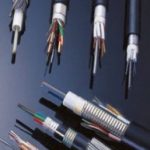- This topic has 11 replies, 7 voices, and was last updated 9 years, 5 months ago by
 Karan Ahuja.
Karan Ahuja.
-
AuthorPosts
-
-
March 23, 2016 at 2:29 am #33580
 jyoti rainaSpectator
jyoti rainaSpectatorhi all..
i have a query abt the usage of specific amplifiers in circuit.. there are many amplifiers in the optical folder in amplifier library..can u people tel me which amplifier shud i use and which one is best to use and which gives good results with least distance..and why?/?
thankng in advnce -
March 23, 2016 at 2:36 am #33581
 FAYIQA NAQSHBANDISpectator
FAYIQA NAQSHBANDISpectatorHELLO JYOTI..
You are right there are number of amplifiers in the optical library of amplifiers and as far as ur query is concerned the usage of a particular amplifier depends well on the application of respective amplifiers…there are times when each amplifier can give u same results and then sometimes there is large difference between the results..
I will suggest u to refer to these links to get an idea where when and why we use different amplifiers.. i hope it is helpful to u.
Thanks & regards-
March 23, 2016 at 8:50 am #33599
 jyoti rainaSpectator
jyoti rainaSpectatorhi fayiqa naqshbandi mam.. thanx for replying and helping..
i hv gone through the links u had provided and i noticed that there has been talk abt only optical amplifiers and EDFAs..is thr any diffrnce btwn using the two..?
it is really confusing bcz both present in optical amplifier folder of the amplifier..can someone explain why so..
-
-
March 23, 2016 at 4:35 am #33586
 Ranjeet KumarParticipant
Ranjeet KumarParticipantHi,
Fiber amplifiers used in WDM systems usually make use of control systems as power or gain. Designs Er-doped fiber amplifiers by considering numerical solutions of the rate and the propagation equations under stationary conditions. The model includes amplified spontaneous emission (ASE) as observed in the amplifier Erbium Doped Fiber.
The main difference is related to the amplifier pump scheme selection. You can choose co-propagating, counter-propagating, or bi-directional pump schemes with the option to set wavelength and pump power. Geometrical Er-doped fiber parameters and cross-section curves are required as input files. As output files, you can access gain, output power values, and noise figure determined in the ASE bandwidth set as noise input data.
Enables the design of amplifiers, including EDFAs, that consider pre-defined operational conditions. This means that expected gain, noise figure, and amplifier output power can be previously specified. The amplifier presents the same facilities as a black box model, which enables you to select the operation mode with gain control, power control, or to perform simulations under saturated conditions, as well as define the expected amplifier performance. It is specially suited to perform prompt performance analysis of one or cascaded amplifiers in a long-haul system.-
March 23, 2016 at 8:53 am #33600
 jyoti rainaSpectator
jyoti rainaSpectatorhi ranjeet..thanx fr replying..m grateful to u..
u hv talked abt “The amplifier presents the same facilities as a black box model, which enables you to select the operation mode with gain control, power control, or to perform simulations under saturated conditions”..can u tel me plz what is this black box thing here and what is difference in power control n gain control..hw we see this?
-
-
March 23, 2016 at 8:28 am #33594
 Aabid BabaParticipant
Aabid BabaParticipantHello jyoti,
As the other members have already mentioned what are the differences between various types of amplifiers , as far as i know i would like to mention that it also depends on which domain you are working in. Is is the all optical or conventional electro-optical. But mainly it dependes on the need of your system design. Go through the links and the tutorial lesson on amplifiers you will get a good idea regarding all this.
Regards-
March 23, 2016 at 8:57 am #33602
 jyoti rainaSpectator
jyoti rainaSpectatorhi aabid sir…thanx for replying to query..
i dont understand what u mean by domain and electro-optical thing..can u plz tel me what is this..and yes the link has topic started by u all people..u hv also mentioned there regarding the difference between optical and EDFA.
i hv designed a simple WDM transmitter and 4 receiver design..i want to knw which amplifier vil gv me good results..and why .thanx in advance..
-
-
April 23, 2016 at 3:42 am #38461
raja irfan
Participantagreed with the rater
-
April 23, 2016 at 4:58 am #38464
 Rajguru M. MohanParticipant
Rajguru M. MohanParticipantHi Jyoti,
In optical fiber library we have different types of amplifier lke Raman amplifier, EDFA amplifier and Semiconductor optical amplifier(SOA).
I want to share characteristics of different amplifiers, now the selection of different amplifiers depends upon its application, feasibilty, power pumping availability we have.Characteristics of SOA types:
Polarization dependent – require polarization maintaining fiber
Relatively high gain ~20 dB
Output saturation power 5-10 dBm
Large BW
Can operate at 800, 1300, and 1500 nm wavelength regions.
Compact and easily integrated with other devices
Can be integrated into arrays
High noise figure and cross-talk levels due to nonlinear phenomenon such as 4-
wave mixing.This last feature restricts the use of SOAs.
Limited in operation below 10 Gb/s. (Higher rates are possible with lower gain.) -
April 23, 2016 at 4:59 am #38465
 Rajguru M. MohanParticipant
Rajguru M. MohanParticipantHi Jyoti,
Now i would like to share advantage and disadvantage of EDFA:
Characteristics of EDFAs (advantages):
High power transfer efficiency from pump to signal power (> 50%).
Wide spectral band amplification with relative flat gain (>20 dB) – useful for
WDM applications.
Saturation output > 1 mW (10 to 25 dBm).
Gain-time constant long (>100 msec) to overcome patterning effects and intermodulation
distortions ( low noise).
Large dynamic range.
Low noise figure.
Polarization independent.
Suitable for long-haul applications.
Disadvantages of EDFAs:
Relatively large devices (km lengths of fiber) – not easily integrated with other
devices.
ASE – amplified spontaneous emission. There is always some output even with
no signal input due to some excitation of ions in the fiber – spontaneous noise.
Cross-talk effects.
Gain saturation effects. -
April 23, 2016 at 5:03 am #38466
 Rajguru M. MohanParticipant
Rajguru M. MohanParticipantHi Jyoti,
And finally i want to share Advantages & Disadvantages of FRA
AdvantagesVariable wavelength amplification possible
Compatible with installed SM fiber
Can be used to extend EDFAs
Can result in a lower average power over a span, good for lower crosstalk
Very broadband operation may be possible
DisadvantagesHigh pump power requirements, high pump power lasers have only recently arrived
Sophisticated gain control needed
Noise is also an issueSo, at the end i would like to say that we have different parameters to seek for usage of optical amplifiers ..
Pumping power, desired band of operation, gain, attenuation and its applications.Thanks
-
June 29, 2016 at 8:40 pm #40877
 Karan AhujaSpectator
Karan AhujaSpectatorHi
I agree that Fiber amplifiers used in WDM systems usually make use of control systems as power or gain. Designs Er-doped fiber amplifiers by considering numerical solutions of the rate and the propagation equations under stationary conditions. The model includes amplified spontaneous emission (ASE) as observed in the amplifier Erbium Doped Fiber.
The main difference is related to the amplifier pump scheme selection. You can choose co-propagating, counter-propagating, or bi-directional pump schemes with the option to set wavelength and pump power. Geometrical Er-doped fiber parameters and cross-section curves are required as input files. As output files, you can access gain, output power values, and noise figure determined in the ASE bandwidth set as noise input data.
Enables the design of amplifiers, including EDFAs, that consider pre-defined operational conditions. This means that expected gain, noise figure, and amplifier output power can be previously specified. The amplifier presents the same facilities as a black box model, which enables you to select the operation mode with gain control, power control, or to perform simulations under saturated conditions, as well as define the expected amplifier performance. It is specially suited to perform prompt performance analysis of one or cascaded amplifiers in a long-haul system.
You may refer toThanks
-
August 3, 2016 at 9:04 am #41078
 KevParticipant
KevParticipantThere are three main types of today’s amplifier technology:Doped fiber amplifier (The typical representative: EDFA), Semiconductor optical amplifier (SOA), Fiber Raman amplifier (FRA). Each of them has their own working principle, features and applications. Here is the comparison of them according to their specific properties and hope it helps. http://www.fiber-optic-tutorial.com/comparison-of-different-optical-amplifiers.html
-
-
AuthorPosts
- You must be logged in to reply to this topic.

